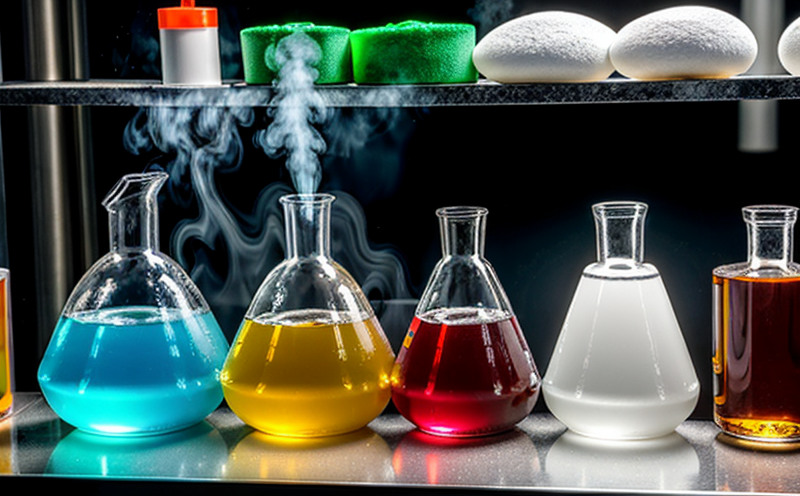Testing chemicals in different forms (solid, liquid, gas) to assess VOC emissions at various stages of production and use
The Importance of VOC Emissions Testing Ensuring a Safer Environment for Your Business
As a responsible business owner, you are likely aware of the significance of maintaining a safe and healthy environment for your employees, customers, and the surrounding community. One critical aspect of achieving this goal is understanding and controlling Volatile Organic Compound (VOC) emissions from chemicals in various forms solid, liquid, and gas. VOCs can pose serious health risks, contribute to air pollution, and even impact the environment. Thats where Eurolab comes in a trusted laboratory service provider specializing in testing chemicals in different forms to assess VOC emissions at various stages of production and use.
Why is Testing Chemicals for VOC Emissions Essential?
The consequences of neglecting VOC emission control can be severe. Exposure to high levels of VOCs has been linked to respiratory problems, neurological damage, and even cancer. Moreover, VOCs contribute significantly to air pollution, which can lead to smog formation, acid rain, and other environmental issues. As a result, businesses must prioritize VOC emission reduction to minimize risks and maintain regulatory compliance.
Advantages of Using Eurolabs VOC Emissions Testing Services
At Eurolab, we offer comprehensive testing services for chemicals in various forms solid, liquid, and gas to assess VOC emissions at different stages of production and use. Our expert team provides accurate results, ensuring your business can take proactive measures to mitigate potential risks.
Key Benefits
Enhanced Safety By identifying and controlling VOC emissions, you can create a safer working environment for your employees, reducing the risk of respiratory problems, neurological damage, and other health issues.
Regulatory Compliance Our testing services help you meet regulatory requirements, avoiding fines and reputational damage associated with non-compliance.
Environmental Protection By minimizing VOC emissions, you contribute to a cleaner environment, reducing air pollution and its negative impacts on the ecosystem.
Increased Efficiency Identifying areas for improvement allows you to optimize production processes, reducing waste and costs associated with rework or excess inventory.
Improved Brand Reputation Demonstrating a commitment to safety, environmental sustainability, and regulatory compliance enhances your brands reputation, attracting customers and investors who share these values.
How Does Eurolabs Testing Service Work?
Our testing services involve the following steps
Sample Collection We collect samples of the chemical in its various forms (solid, liquid, gas) from different stages of production and use.
VOC Emissions Testing Our expert technicians conduct VOC emissions testing using advanced equipment and techniques to accurately measure the levels of VOCs present.
Data Analysis We analyze the test results, providing you with a comprehensive report detailing VOC emission levels, identification of potential sources, and recommendations for improvement.
Action Plan Development Based on our findings, we work with you to develop an action plan addressing areas for improvement, ensuring your business can implement necessary changes.
Frequently Asked Questions
Q What types of chemicals can be tested?
A Our testing services cover a wide range of chemicals in various forms solid, liquid, and gas.
Q How do I prepare my samples for testing?
A We provide detailed guidelines on sample preparation to ensure accurate test results.
Q What is the turnaround time for test results?
A Our standard turnaround time is insert timeframe, but we can expedite services in emergency situations.
Q Can I get ongoing support and monitoring after testing?
A Yes, our expert team provides ongoing support and recommendations to help you maintain VOC emission control and regulatory compliance.
Conclusion
Eurolabs comprehensive testing services for chemicals in various forms solid, liquid, and gas provide businesses with the necessary tools to assess VOC emissions at different stages of production and use. By leveraging our expertise, you can create a safer environment for your employees, customers, and the surrounding community while maintaining regulatory compliance and environmental protection. Contact us today to learn more about how Eurolab can support your business in achieving a healthier and more sustainable future.
-
Testing the emission of volatile organic compounds (VOCs) from chemicals or materials
-
Measuring VOC concentration in chemicals to ensure compliance with environmental regulations
-
Assessing the VOC release rates of solvents, coatings, and adhesives
-
Determining the environmental impact of VOC emissions from chemicals used in manufacturing
-
Simulating real-world conditions to measure VOC emissions during product use or storage
-
Evaluating the potential health risks posed by VOCs emitted from chemicals and materials
-
Testing for the presence of specific VOCs such as benzene, toluene, and formaldehyde in chemicals
-
Assessing the reduction of VOC emissions through formulation changes or new chemical additives
-
Testing the impact of temperature and humidity on VOC release from chemicals
-
Determining the VOC content in consumer products, coatings, and paints
-
Ensuring that chemical products meet national and international VOC regulations for emissions
-
Testing how VOCs in chemicals contribute to indoor air pollution and their potential for toxicity
-
Evaluating the volatility of chemicals under different environmental conditions, such as high heat or direct sunlight
-
Measuring the impact of VOCs on air quality in confined spaces like factories and warehouses
-
Analyzing the effect of packaging materials on the emission of VOCs from chemicals
-
Testing the impact of VOC exposure on human health and safety in both industrial and commercial environments
-
Determining the compliance of chemicals with EPA and other regulatory standards for VOC emissions
-
Testing chemicals for VOC emissions using chamber methods, direct reading instruments, or laboratory analysis
-
Simulating VOC exposure scenarios to measure air quality levels and determine safe limits for chemicals
-
Evaluating the potential for VOC emissions to react with other materials, creating hazardous byproducts
-
Testing the efficiency of VOC removal systems, such as filters and scrubbers, used in industrial applications




